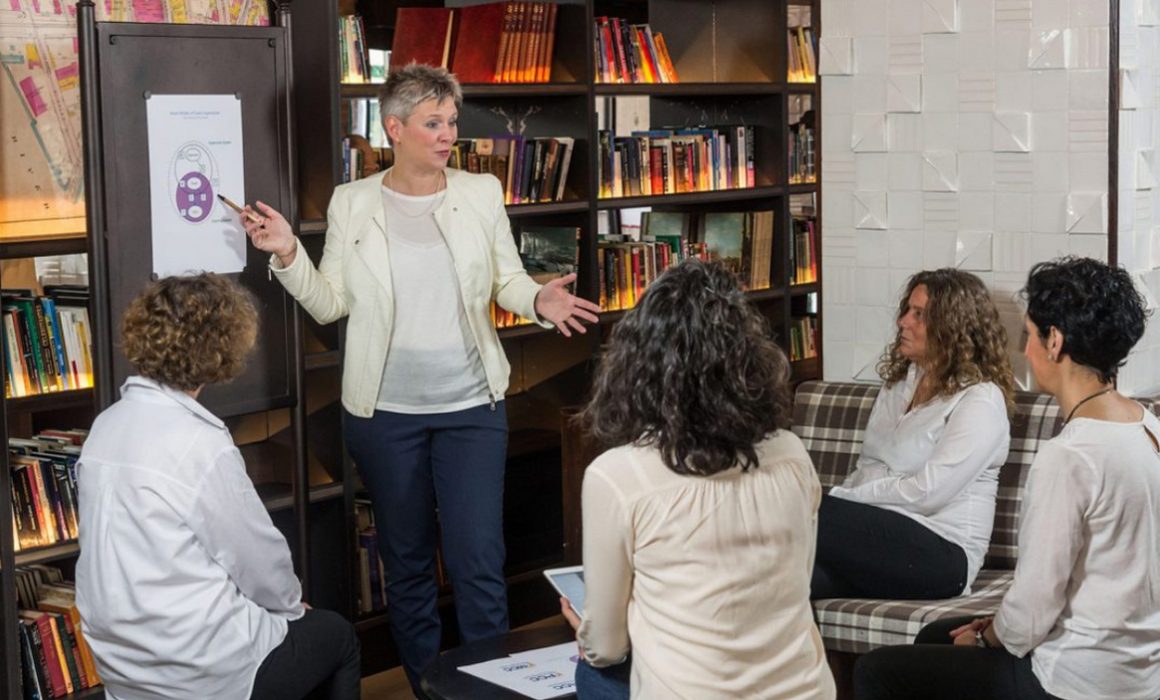A Coach Supervision experience for group coaches
I have recently completed a cycle of Coach Supervision for coaches with a group of coaches in Madrid, and I wanted to share the experience in this blog, because making this methodology of development and self-care for coaches known in Spain has been a great personal goal for which I have been preparing myself in the last years. Seeing it finally landed and bringing real value was an important achievement for me.
Coach Supervision work for coaches is not yet widespread in Spain. Although many coaches here do have a mentor - an expert who gives you feedback - to further deepen and improve their level of coaching competence.
Supervision is a very different kind of work, which is better understood when we separate the term: "SUPER-VISION". It is a "reflective work" in which the coach expands his vision on a coaching process he has with a specific client. Through a "coaching the coach" methodology , we can become more aware of the dynamics that are active between us and the client, how we as coaches are influencing the process, and what may be interfering with the coach's overall effectiveness or concern. In addition to generating clarity about the process and our blind spots in this regard, the session with the supervisor also allows us to process the emotional charge and discover new ways to do transformational coaching.
In other European countries such as the United Kingdom, France, Germany and the Netherlands, supervision has been consolidated as an essential element of the continuous development and commitment to quality of coaching professionals, to the point that companies that hire external coaches and many coach associations include it as a requirement to practice. In Spain, ICF also recognizes supervision work as a best practice for the professional coach and validates it as a source of CCE credits for credential renewal (1 hour of supervision = 1 CCE credit).
Who is Coach Supervision for?
Coach Supervision can benefit all types of coaches. I have done individual supervision for life coaches, and the group I had the pleasure of working with these months were very experienced, PCC-certified executive coaches. One of the main expectations of this group was to be able to share in an atmosphere of trust and professionalism the challenges they faced with their clients, and to gain new perspectives to bring to their sessions from the joint reflection and wisdom of the group. In other words, to feel supported and encouraged by peers in the practice of their profession.
How does group supervision work?
As a standard way of working, group members first briefly outlined the case they wanted to supervise. To ensure confidentiality, we agreed not to reveal the name of the client or the company, in case there was a possibility that someone in the group might know them. The group then decided which of the situations described were of most interest to everyone to address in this session. Not all members are usually able to work on their own case in each supervision, but the group ensures that each coach has a turn during the meetings, and it is normal to find common ground with another coach's challenge.
To start the supervision of the first case, I invite the supervised coach to sit with me, while the other members of the group take on the role of observers. But at the same time they have a very active role. While the main reflection with the supervisee is led by the supervisor, at various times we open the space for the observers to contribute their wisdom and feelings. This is done in a guided and structured way. The supervised coach then has the opportunity to let himself be challenged and helped by these contributions, and to integrate them into his conclusions or action plan.
Methodologies used
The group also showed great interest in understanding the methodologies we were using to reflect on the cases, and we took the opportunity to explain the tools we had used in the session. This contributes to developing the capacity for self-supervision, and also for more experienced groups to take an increasingly autonomous role in supervision work.
- The Seven Eyes Model is present as a basic methodology in all sessions, with which we explore a coaching relationship from different perspectives: the client's, the coach's, the relationship between the two, the supervisor's perspective, etc. The exercise helps to take a step back and look more clearly at the dynamics at work in the coaching, and gives clues as to how we can approach the process more effectively.
- Also very revealing was the Four Level Challenge Exploration, which makes us look behind the facts, behaviors and emotions to uncover the beliefs and assumptions that are influencing the case: when our client or we ourselves are so entangled in the events that we don't see the forest through the trees, this tool helps to quickly get to the key issue that is causing blockage.
- One last tool I want to mention is Heron's Intervention Styles, which holds a mirror up to us by identifying our preferred way of communicating with a client, and offers us ways to modulate it to have a different impact on the coaching.
For future sessions we have more resources, questions and above all curiosity, to put at the service of our development and well-being as coaches, and to support the progress our clients are seeking.
Working on a regular basis with this group of Coach Supervision for coaches has been a very rich experience for me. I want to thank them for their trust and willingness. For being generous in their contributions and feedback, for knowing how to be part of a group and at the same time lead it, being protagonists each one, and for the empathy and non-judgment that helped everyone to open up and take away new learnings.



